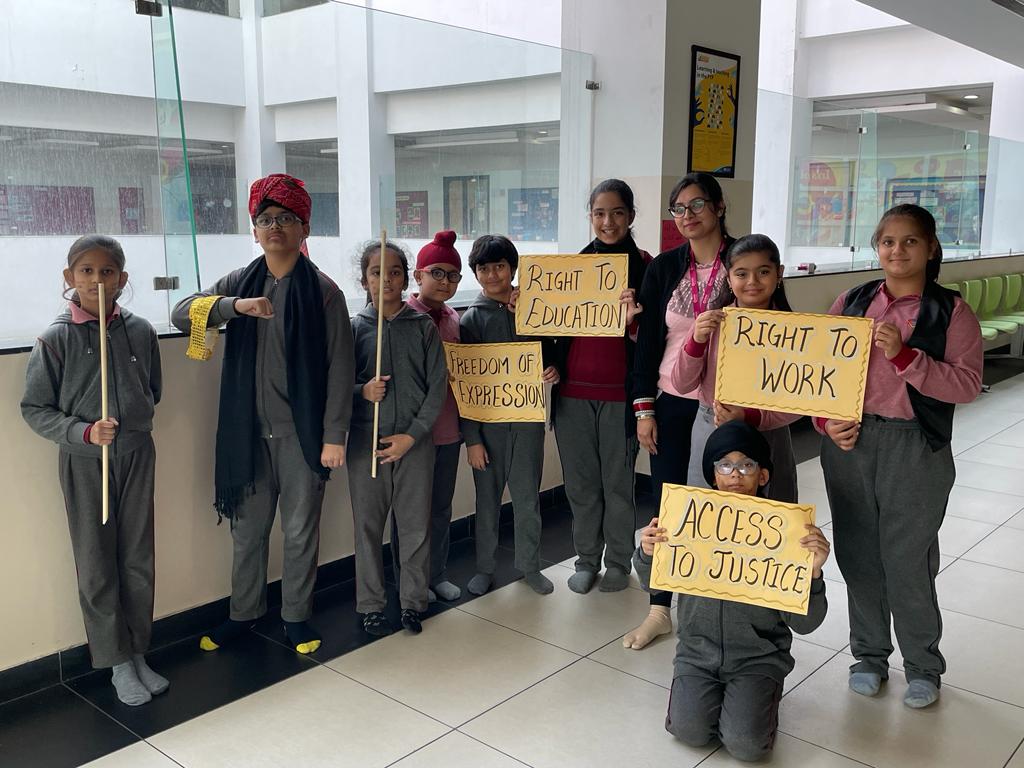Personalized Learning Paths: Tailoring Education to Individual Student Needs

Introduction
At Genesis Global School, the rapid technological advancements and diverse student needs, where the best boarding school in delhi ncr which take the personalized learning paths emerges as a powerful approach to education. By tailoring instruction to individual students’ strengths, weaknesses, and interests, personalized learning aims to enhance engagement, improve academic outcomes, and foster a love for learning. This article explores the concept of personalized learning paths, their benefits, challenges, and effective strategies for implementation.
Understanding Personalized Learning Paths
Personalized learning paths refer to customized educational plans designed to meet the unique needs of each student. Unlike traditional one-size-fits-all approaches, personalized learning focuses on creating a tailored educational experience that considers individual learning styles, pace, and preferences.
- Individualized Instruction: Personalized learning involves differentiating instruction to cater to each student’s unique needs. This approach can include varied teaching methods, adaptive learning technologies, and individualized assignments.
- Student-Centered Learning: At the core of personalized learning is a student-centered approach that empowers learners to take an active role in their education. Students set goals, track their progress, and reflect on their learning experiences.
- Flexible Learning Environments: Personalized learning often requires flexible learning environments that support diverse instructional strategies. This can include blended learning models, online resources, and project-based learning.
Benefits of Personalized Learning Paths
Implementing personalized learning paths offers numerous benefits for students, educators, and the overall educational experience:
- Enhanced Engagement: Personalized learning increases student engagement by providing relevant and interesting content. When students see the connection between their learning and their interests, they are more motivated to participate actively.
- Improved Academic Outcomes: Tailoring instruction to individual needs helps address learning gaps and challenges. As a result, students can achieve better academic outcomes and demonstrate higher levels of mastery.
- Fostering Independence: Personalized learning encourages students to take ownership of their education. By setting their own goals and tracking progress, students develop important skills such as self-regulation, time management, and critical thinking.
- Catering to Diverse Learning Styles: Every student has a unique learning style. Personalized learning paths accommodate these differences by offering varied instructional approaches, ensuring that all students can access and understand the material.=
- Building Lifelong Learners: Personalized learning fosters a love for learning by making education relevant and enjoyable. Students who experience success through personalized paths are more likely to become lifelong learners.
Challenges of Implementing Personalized Learning Paths
Despite its benefits, personalized learning paths come with several challenges that schools must address to ensure successful implementation:
- Resource Allocation: Developing and maintaining personalized learning paths can be resource-intensive. Schools need access to adaptive learning technologies, training for educators, and sufficient time for planning and assessment.
- Teacher Training: Educators play a crucial role in personalized learning. Providing teachers with the necessary training and professional development is essential to help them effectively design and implement personalized learning strategies.
- Data Management: Personalized learning relies heavily on data to track student progress and make informed decisions. Schools must establish robust data management systems to collect, analyze, and use data effectively.
- Equity and Access: Ensuring equitable access to personalized learning opportunities is vital. Schools must address disparities in technology access and provide support for students who may need additional resources.
- Balancing Standardization and Personalization: While personalized learning focuses on individual needs, schools must still meet standardized educational requirements. Finding the right balance between personalization and standardization is crucial.
Strategies for Effective Implementation
To overcome these challenges and successfully implement personalized learning paths, schools can adopt several strategies:
- Leveraging Technology: Adaptive learning technologies, such as learning management systems (LMS) and educational software, can support personalized learning by providing customized content, assessments, and feedback.
- Blended Learning Models: Combining traditional classroom instruction with online learning allows for greater flexibility and personalization. Blended learning models can accommodate different learning styles and paces.
- Project-Based Learning: Engaging students in real-world projects that align with their interests fosters deeper learning and application of knowledge. Project-based learning encourages collaboration, critical thinking, and problem-solving.
- Regular Assessments and Feedback: Continuous assessment and feedback are essential for personalized learning. Formative assessments, peer reviews, and self-assessments help students and teachers monitor progress and make necessary adjustments.
- Collaborative Learning Environments: Creating collaborative learning spaces encourages peer-to-peer learning and support. Group projects, discussions, and cooperative learning activities promote social interaction and shared knowledge.
Future Trends in Personalized Learning
As education continues to evolve, several emerging trends are likely to shape the future of personalized learning paths:
- Artificial Intelligence (AI): AI-powered tools can analyze student data and provide personalized recommendations for learning materials and strategies. AI can also automate administrative tasks, allowing teachers to focus more on instruction.
- Gamification: Incorporating game elements into learning can make education more engaging and enjoyable. Gamification can motivate students to complete tasks, achieve goals, and participate actively in their learning journey.
- Virtual and Augmented Reality (VR/AR): VR and AR technologies can create immersive learning experiences that cater to individual needs. Students can explore virtual environments, conduct simulations, and engage in interactive learning activities.
- Data-Driven Decision Making: The use of data analytics to inform personalized learning strategies will become more prevalent. Schools will increasingly rely on data to identify trends, predict student needs, and tailor instruction accordingly.
- Student Agency and Voice: Empowering students to have a say in their learning paths will be a key focus. Providing opportunities for student choice, voice, and leadership in their education will enhance engagement and ownership.
Conclusion
At Genesis Global School, personalized learning paths represent a transformative approach to education, tailoring instruction to meet the unique needs of each student. Among the top boarding schools in delhi ncr, which by leveraging technology, adopts the innovative teaching methods, and addressing challenges, schools can create more engaging, effective, and inclusive learning environments. As personalized learning continues to evolve, it promises to prepare students for success in an increasingly diverse and dynamic world.
Popular Posts
Recent Posts
Archive
- January 2025
- December 2024
- November 2024
- October 2024
- September 2024
- August 2024
- July 2024
- June 2024
- May 2024
- April 2024
- March 2024
- February 2024
Newsletter
 A1 and A12, SECTOR-132,EXPRESSWAY, NOIDA (201304)
A1 and A12, SECTOR-132,EXPRESSWAY, NOIDA (201304)
 +91-9711000498 / 560 / 625 / 626
+91-9711000498 / 560 / 625 / 626
 info@genesisgs.edu.in
info@genesisgs.edu.in
- Contact Us
- Address
- Mobile Number
- +91-9711000498 / 560 / 625 / 626
- info@genesisgs.edu.in
© Copyright 2018, all rights reserved with Genesis Global School




















